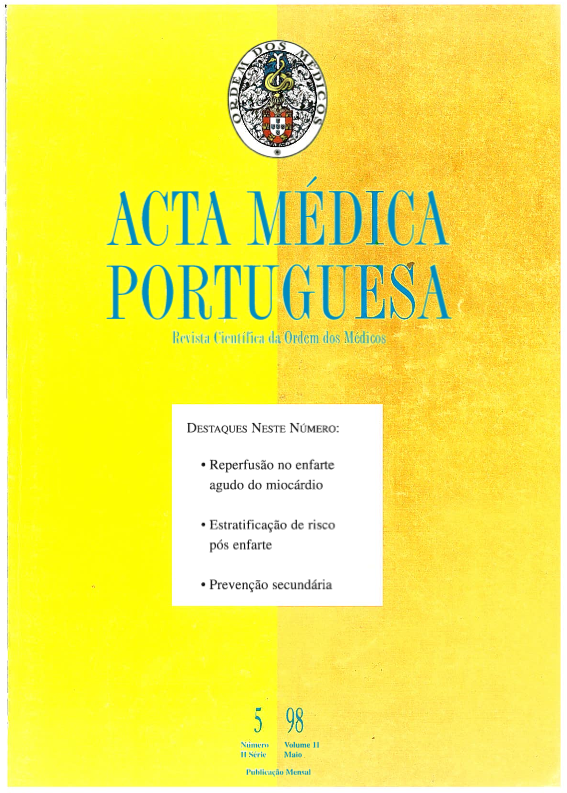High-resolution electrocardiography in acute myocardial infarct.
DOI:
https://doi.org/10.20344/amp.2252Abstract
The author starts by highlighting the importance of risk stratification in patients who have survived a myocardial infarction. High resolution electrocardiography, also called signal-averaged electrocardiography (SAECG), appears in this setting as a diagnostic tool that, by providing important information about the way the intraventricular conduction of the electrical impulse is made, contributes to the characterization of the arrhythmogenic substrate, which is the basis of ventricular tachycardia and fibrillation. By resorting to the averaging of the electrocardiographic signal, SAECG enables us to detect ventricular late potentials whenever the analysis of that signal is made in time-domain. Further details, which will enrich the information on ventricular activation, can be obtained if the analysis is made in the frequency-domain (spectral analysis). The importance of detecting abnormalities in the SAECG recordings lies in the fact that those abnormalities are related to the occurrence of ventricular tachycardia and fibrillation, which are responsible for arrhythmic death. After referring to the criteria of positivity of SAECG and its reproducibility, the author approaches the most important part of the paper: the clinical applications of SAECG. After focusing on the interest of the method in noncoronary conditions, its usefulness in patients with acute myocardial infarction is pointed out. The author then mentions the prevalence of abnormalities in SAECG in patients with acute myocardial infarction and emphasizes the interest of the method in risk stratification. The author then presents the results of his Group in what concerns prevalence and prognosis. Finally, the author refers to the application of SAECG in other forms of coronary artery disease besides myocardial infarction.Downloads
Downloads
How to Cite
Issue
Section
License
All the articles published in the AMP are open access and comply with the requirements of funding agencies or academic institutions. The AMP is governed by the terms of the Creative Commons ‘Attribution – Non-Commercial Use - (CC-BY-NC)’ license, regarding the use by third parties.
It is the author’s responsibility to obtain approval for the reproduction of figures, tables, etc. from other publications.
Upon acceptance of an article for publication, the authors will be asked to complete the ICMJE “Copyright Liability and Copyright Sharing Statement “(http://www.actamedicaportuguesa.com/info/AMP-NormasPublicacao.pdf) and the “Declaration of Potential Conflicts of Interest” (http:// www.icmje.org/conflicts-of-interest). An e-mail will be sent to the corresponding author to acknowledge receipt of the manuscript.
After publication, the authors are authorised to make their articles available in repositories of their institutions of origin, as long as they always mention where they were published and according to the Creative Commons license.









